Prof. Barbaros’ Energy Storage Group Visited Energy Development Board (EDB) Singapore
Prof. Barbaros Oezyilmaz’s Energy Group visited Singapore’s EBD on May 3, 2024 to present updates on the OSTIN Grant for the use of supercapacitor in space.
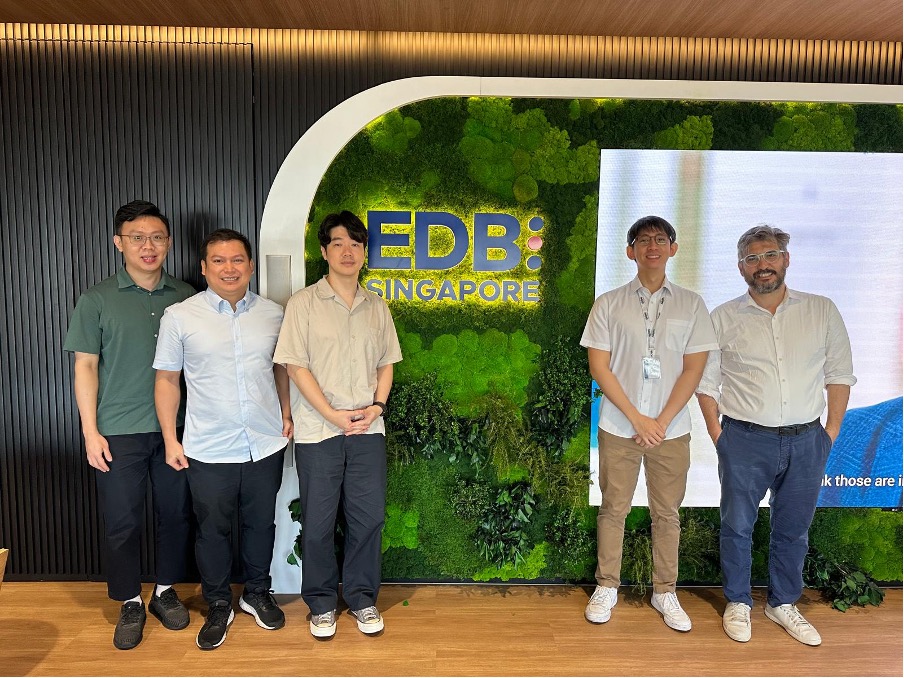
Breakthrough in Magnetoresistance Properties of MoS2 Unveiled by Barbaros Group
In a landmark study, we have made significant strides in understanding the magnetoresistance properties of bilayer molybdenum disulfide (MoS2), a material poised to revolutionize electronic devices and sensors. The team, led by prominent scientists in the field of material science, explored the properties of MoS2 encapsulated by hexagonal boron nitride, using a sophisticated dual-gated setup.
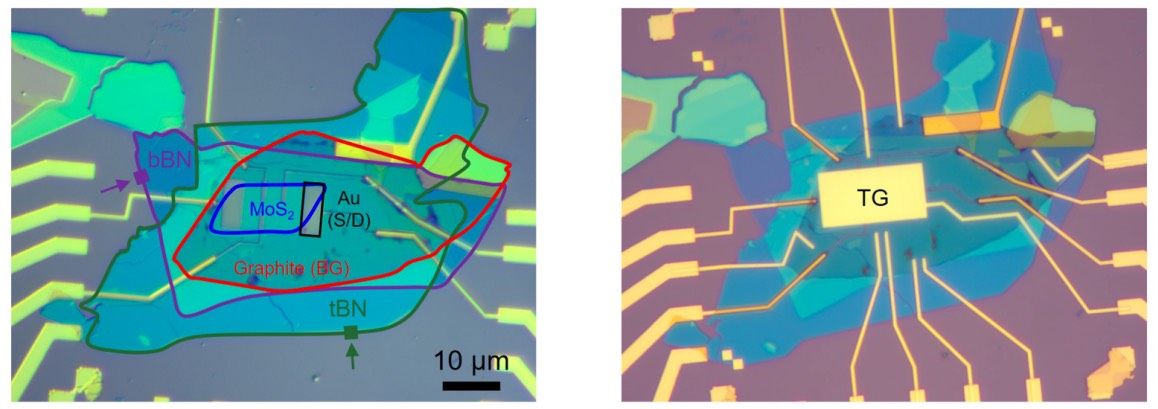
The research reveals an unexpected negative magnetoresistance at low magnetic fields (less than 0.5 Tesla), primarily attributed to the weak localization effect—a quantum phenomenon that enhances the electron’s ability to resist changes in its path due to disorder. This insight opens up new avenues for the development of high-performance electronic components that could operate efficiently in varying magnetic environments.
Further investigations by our team have demonstrated a consistent increase in the phase coherence length and mean free path with electron density, suggesting enhanced performance characteristics at higher electron densities. Interestingly, the displacement field showed no significant impact on these parameters, highlighting the unique properties of MoS2 as influenced by electron interactions rather than external tuning.
Additionally, temperature-dependent studies identified Coulomb scattering as the primary dephasing mechanism when lower spin-orbit split bands are involved in transport. This finding supports the concept of spin-polarized valleys, or ‘spin-valley locking’, where intrinsic spin-orbit coupling helps maintain spin states, offering a protective mechanism absent in conventional materials.
Barbaros group is excited to share these findings, which not only advance the understanding of two-dimensional materials but also suggest potential applications in next-generation electronic and quantum devices. The lab is currently seeking new students, researchers, and potential industrial partners to join in exploring the vast potential of these materials. This research promises to open doors to innovative technologies and foster collaborations that could shape the future of materials science. For those interested in joining or collaborating with our team, please contact us through our website or directly at barbaros@nus.edu.sg. Let’s innovate together!
Barbaros Group has announced a significant discovery in the field of spintronics – a fast-growing approach to power efficiency that could revolutionise the development of low-power electronic devices. The research collaboration between groups led by Assistant Professor Ahmet Avsar and Professor Barbaros Özyilmaz (both from Materials Science and Engineering) delves into the unique properties of an ultrathin, two-dimensional material called black phosphorus and how it transports spinning electrons.

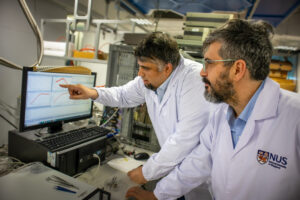
The team’s findings were published recently in the journal Nature Materials.
Unlike traditional electronics, which rely on the movement of electrical charge, spintronics utilises the intrinsic spin of electrons to create more energy-efficient devices.
Electrons have a spin state of “up” or “down” causing the electrons to act like tiny magnets and manipulating this state has been seen by researchers as crucial for achieving lower power operation in electronic devices. This is because the spin motion of electrons inherently dissipates far less heat than the movement of electrical charge used in traditional electronics.
Graphene and positively polarized P(VDF-TrFE) assist in controlling Zn nucleation and growth on Cu substrate, enabling a high-performance zinc metal-free zinc-ion batteries.
Aqueous zinc-ion batteries have attracted extensive attention due to its use of aqueous electrolyte, high theoretical Zn capacity, high energy density, abundant resources, and easy material handling. And zinc metal-free zinc-ion batteries hold promise for achieving higher energy densities by eliminating the need for dense zinc foil as the anode. However, the direct use of substrates like copper foil in these batteries results in poor cyclic stability due to dendrite growth. In order to prevent dendrite formation, delving into the nucleation sites and growth dynamics of Zn can yield valuable insights. The initial nucleation of Zn can be controlled through substrates that offer a minimal lattice mismatch with Zn. Furthermore, the growth process influenced by the flux of Zn²⁺ and its deposition can be influenced by the electric field originating from the surface. Thus, tailoring the surface characteristics of the substrate for zinc metal-free Zn-ion batteries should address the challenges posed by dendrite growth.
Herein, we proposed a strategy to guide the nucleation sites and growth dynamics of Zn by introducing Graphene and positively polarized (poly(vinylidene fluoride-trifluoroethylene) (P(VDF-TrFE))) on the copper substrate. The graphene coating guides the initial nucleation of Zn to form hexagonal plate. Then, the positively polarized P(VDF-TrFE) enable the growth along the hexagonal plate to regular crystalline plate. As expected, for the half-cell, a significant improvement in the cell cycle life up to 3000 cycles at a high current density of 10 mA cm-2 with a capacity of 1 mAh cm-2 was achieved, which is to our knowledge one of the longest lifespan ever reported for Zinc ion battery.
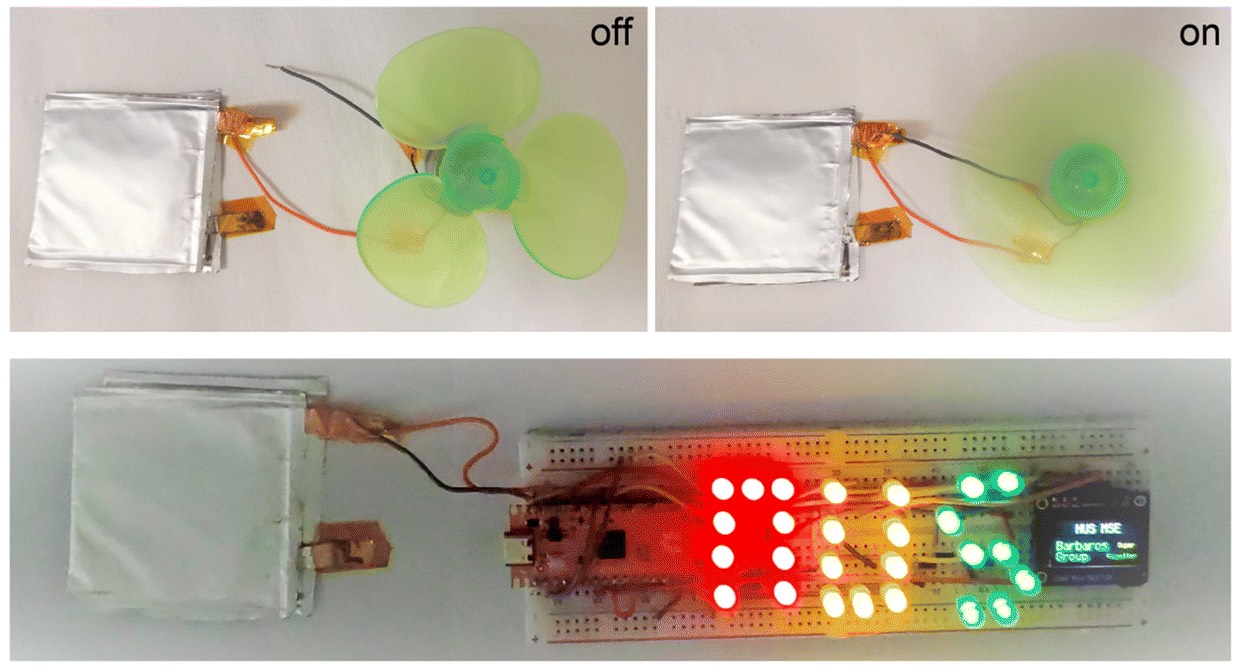
Combined with the Zn-inserted MnO2 cathode, the full cell is constructed, which showed good cycling stability (83% after 500 cycles) and high energy density of 378 Wh Kg-1 at 0.5 mA cm-2, higher than the traditional Zn ion battery using Zn anode (136 Wh Kg-1). As a demonstration, the pouch cell was prepared, which can successfully power the electric fan and LED lights, demonstrating its promising applications as high-performance zinc metal-free Zn ion battery.
Graphenelab and Australian-based supercapacitor maker Cap-XX discussed about collaboration opportunities. From left is Graphene Lab’s manager that oversees commercialization Carlo Orofeo, Cap-XX India’s Business Development Manager Mr. Subramanian Palanivelan, Cap-XX’s CEO Mr. Lars Stegmann, NUS Prof. Barbaros Ozyilmaz, and Philipp von Pein.

About Cap-XX:
CAP-XX is a world leader in the design and manufacture of thin, flat supercapacitors and energy management systems used in portable and small-scale electronic devices.
New Frontier Capital (NFC) CEO Mr. Shigeki Usuki (Center) together with Prof. Barbaros Ozyilmaz (5th from left) and Commercialization Manager Carlo Orofeo (2nd from left) discussed about commercialization opportunities.
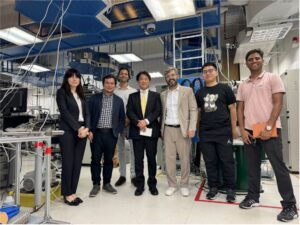
About New Frontier Capital (NFC):
With the basic concept of “a new platform for creating the future globally”, NFC is working on “establishing a global investment fund” and “building a global innovation ecosystem”, and would like to create a new platform through the fund business together with global investors and global business companies.
CDE Awards and Recognition 2023
Professor Barbaros Özyilmaz is recognised at the ceremony having been named in the 2022 Highly Cited Researchers list and among the World’s Most Influential Scientific Minds – an annual list compiled by Clarivate.
The lightweight graphene nanofoam supercapacitor can help trigger a new generation of satellites. Earlier this year, the group was awarded a grant by the Office for Space Technology & Industry (OSTIn), Singapore’s national space office, for this work under the Space Technology Development Programme Grant to develop prototypes that can leverage from the material platform.
Small satellites used in satellite internet constellations, such as by SpaceX (Starlink), and Amazon (Project Kuiper), are currently volume-constrained due to the size of the battery pack and the need to carry a large number of sensors. The team plans to replace existing battery packs with a hybrid energy storage system, where an even smaller supercapacitor complements a far smaller battery pack. The new hybrid energy storage system can open up many other potential applications and power up Singapore’s emerging space industry.
We are proud to share that as NUS Centre for Advanced 2D Materials (CA2DM)’s leadership, Professor Barbaros Oezyilmaz is amongst the recent Stanford University’s World Top 2% of Scientists. Congratulations Professor Barbaros Oezyilmaz.
